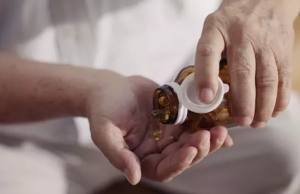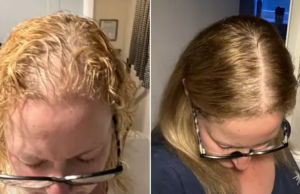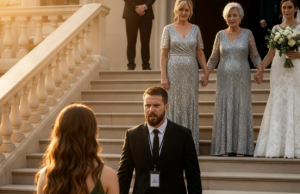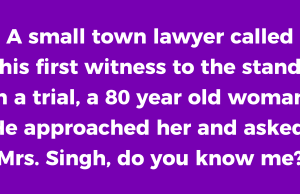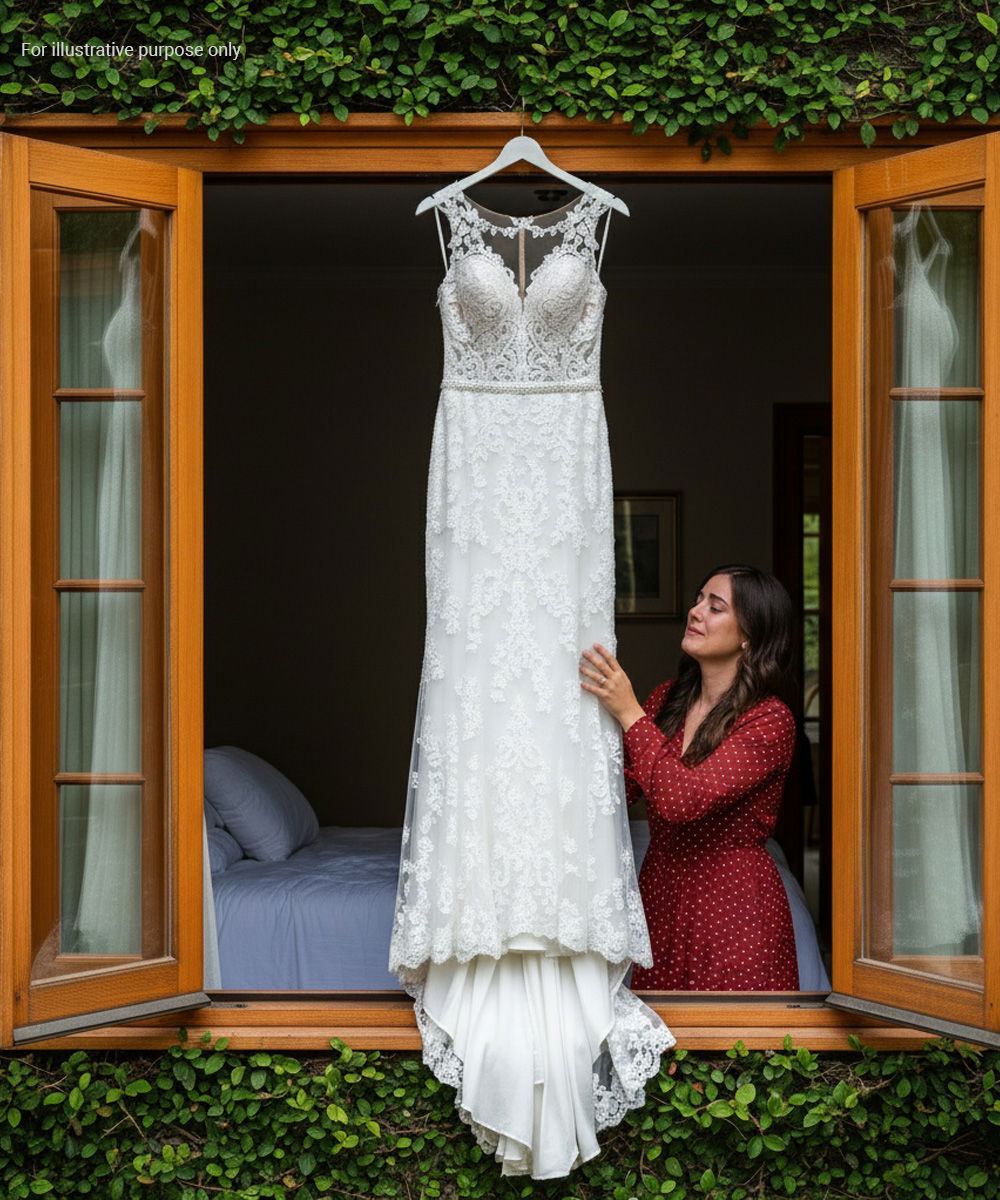
I hadn’t planned to stop that morning. The garage sale on Cedar Lane looked like any other—cardboard boxes, sagging tables, and piles of dusty old toys. But then I noticed it: a white garment bag hanging from a rusty rack, its zipper catching the light. Something about its shape made me freeze.
Inside was a wedding dress. Simple yet elegant—ivory satin with a lace bodice, unmistakably from the 1990s. I knew it instantly. It was my mother’s.
Twenty years ago, my mother, Elaine Parker, disappeared on her wedding day. She was supposed to marry my father but never made it to the church. No note. No trace. Just her car found by Lake Montrose, keys still in the ignition. The story had dominated local headlines for months before going cold. My father never remarried. I was only eight.
The woman running the sale—a tired-looking lady with streaked hair—told me she’d discovered the dress in a storage unit she’d won at auction. “Didn’t think anyone would want it,” she said offhandedly.
I handed her twenty dollars and carried the garment home, my pulse racing as if I’d unearthed a ghost.
Once there, I unzipped the bag and spread the dress across my bed. It smelled faintly of cedar and years gone by. Running my fingers along the seams, I tried to imagine my mother wearing it. Then, near the hem, my hand brushed against something odd—a small, hard bump sewn into the lining.
My pulse spiked.
I fetched scissors and carefully slit a few threads. Inside, wrapped in discolored tissue paper, was a small metal key attached to a faded blue ribbon. Tied to it was a tag, its ink smudged but still legible:
“If anything happens — 14B, Stonebridge.”
I had no idea what it meant. Yet I knew one thing — my mother had hidden it. And she’d meant for someone to find it.
That night I called my father. As I told him what I’d found, there was a long silence on the other end.
Then he said quietly, “You shouldn’t dig this up, Claire. Let it stay buried.”
Yet I couldn’t. Because if my mother had left behind a key, there had to be a door — and behind that door, maybe the truth we’d all been running from….
The morning that followed, I drove to Stonebridge Apartments, a crumbling complex on the edge of downtown Milwaukee. Apartment 14B was on the second floor, its paint peeling and mailbox rusted. It didn’t look like anyone had lived there in years.
The key fit.
The door opened with a groan, and stale air poured out — the smell of dust, old paper, and something faintly metallic. The curtains were drawn, the furniture covered in sheets. It was like time had stopped the day my mother disappeared.
On the kitchen counter, a ceramic mug still sat with the ghost ring of old coffee. I flicked on the light — the bulb flickered but held.
That’s when I saw it: a man’s jacket draped over a chair.
I walked through the apartment slowly. In the bedroom, a box sat on the dresser, labeled “Elaine – Personal.” Inside were letters, photographs, and a journal bound in worn leather. The first entry was dated three months before her wedding.
“I’m scared. I thought leaving Robert would be the hardest part. But there’s something bigger, something he’s hiding. I can’t go through with the wedding until I know what’s real.”
Robert. My father.

My hands trembled when I read. The next entries described money transfers, a man named David Sloan, and a construction project called “Montrose Expansion.” She wrote about overhearing something she shouldn’t have — bribes, falsified permits, and someone threatening her to stay silent.
Her last entry was dated two days before the wedding:
“If anything happens, I’ve left everything at Stonebridge. Claire will understand one day.”
I sat on the floor, staring at those words until they blurred. My mother hadn’t run away — she’d been silenced. And my father had lied.
That night, I confronted my father. He looked smaller than I remembered, sitting in his worn recliner, the TV flickering blue across his face.
As I told him about the apartment, his hands began to shake. “I was trying to protect you,” he said. “She got in over her head. David Sloan wasn’t who she thought he was.”
“Wasn’t who she thought he was?” I repeated. “Or wasn’t who you thought he was?”
He looked up at me then — eyes wet, defeated. “He was my partner.”
The room went silent except for the hum of the television. I realized the man I’d trusted my whole life had been standing on the other side of my mother’s disappearance.
I didn’t sleep that night. My mother’s journal sat open on my table, her handwriting looping across the pages like she was still speaking to me.
The last line of her final entry caught my eye again:
“If anything happens, check the lake.”
I drove my car to Lake Montrose before sunrise. Mist hung over the water like a ghost. The old pier, half-rotted and cordoned off by a “No Trespassing” sign, creaked under my steps. I knew this place — it was where they’d found her car.
Near the edge, buried under wet leaves, I saw something metallic glinting faintly. A rusted padlock, chained around a storage hatch beneath the dock. I used my mother’s key. It turned smoothly, like it had been waiting.
Inside was a small metal box, wrapped in plastic. My breath caught when I opened it.
Documents. Dozens of them — bank transfers, invoices, photographs — proof of illegal dumping from my father’s construction company into Montrose Creek. Environmental fraud worth millions. And every page signed by both Robert Parker and David Sloan.
At the bottom was a photograph of my mother, taken days before she disappeared. She looked tired but resolute. On the back, in her handwriting:
“For Claire — the truth always finds light.”
I turned everything over to Detective Moreno, the same officer who’d once handled the missing-person case. Within weeks, the investigation reopened. My father was arrested for conspiracy and obstruction. Sloan fled the state but was caught in Nevada. Both men confessed — and with them, the truth of what happened that day finally surfaced.
My mother hadn’t drowned or run away. She’d planned to expose them. On the morning of her wedding, she went to meet Sloan by the lake to hand over the evidence — and never came back. He’d pushed her into the water when she refused to back down. Her body had been trapped beneath debris for two decades until divers found it during the renewed search.
The day they said to me, I sat by the lake until sunset, her wedding dress folded beside me. I thought about the courage it took to hide that key, to trust that someday, someone would find it.
As the police asked what I wanted to do with the dress, I told that I’d keep it — not as a reminder of the wedding that never happened, but of the woman who refused to stay silent.
When the light faded across the lake, I whispered to her,
“You were right, Mom. The truth did find the light.”





